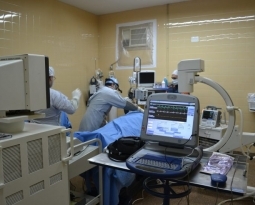Wisconsin Patent of the Month – November 2022
Riflescopes have been used for well over a century with the core components remaining largely the same. There is a large amount of information needed on a shot-by-shot basis in order to effectively hit long-range targets. The shooter needs to process this information and make the correct judgements, calculations, and adjustments in real time. Some additions to riflescopes have been made to try and simplify this process, including optic bubble levels, laser rangefinders and more. Unfortunately, these are often limited.
Sheltered Wings, Inc. (Vortex Optics) has designed an improved viewing optic that uses a direct active reticle targeting design. Their design combines state of the art technology with the core riflescope components to improve on size and capability. Their integrated design ensures there is no delay as information is transmitted and adjustments are made.
While other companies have attempted to design their own integrated riflescopes that combine low light capabilities, laser rangefinders, and ballistic computers, they have all implemented their solutions in the Second Focal Plane of the optic. Since this second focal plane is only well correlated to the image of the scene at a single magnification setting, the location of the aiming point is only accurate at one location. This then requires additional steps and tools to adjust for these variables. Vortex Optics’ design implements their systems with the direct active reticle in the first focal plane.
Their viewing optic is set up with an objective lens system that focuses images from a target down to the first focal plane. An erector lens then inverts this image, focusing it on a second focal plane. A beam combiner then joins a generated, digital image with the target image so that the hunter can see both in the first focal plane simultaneously. This design reduces the equipment and processing power needed in other designs without compromising the accuracy or usability. By building this first focal plane reticle with clear images, the user gets a clean sight picture without losing any wind holds or ranging information, leading to an excellent long-range tactical solution.
Are you developing new technology for an existing application? Did you know your development work could be eligible for the R&D Tax Credit and you can receive up to 14% back on your expenses? Even if your development isn’t successful your work may still qualify for R&D credits (i.e. you don’t need to have a patent to qualify). To find out more, please contact a Swanson Reed R&D Specialist today or check out our free online eligibility test.
Who We Are:
Swanson Reed is one of the U.S.’ largest Specialist R&D tax advisory firms. We manage all facets of the R&D tax credit program, from claim preparation and audit compliance to claim disputes.
Swanson Reed regularly hosts free webinars and provides free IRS CE and CPE credits for CPAs. For more information please visit us at www.swansonreed.com/webinars or contact your usual Swanson Reed representative.

















